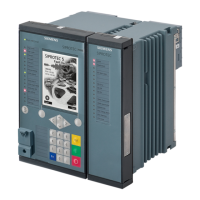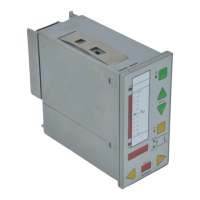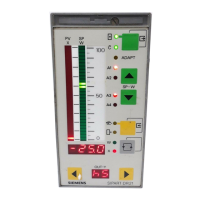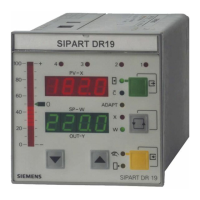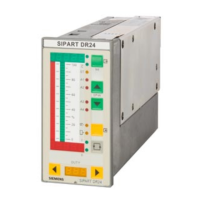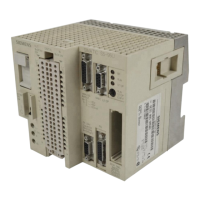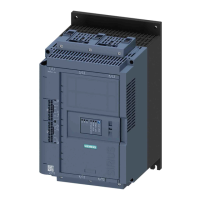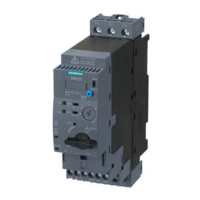Functions
2.2 Overcurrent Protection 50, 51, 50N, 51N
SIPROTEC, 7SJ61, Manual
C53000-G1140-C210-1, Release date 02.2008
66
High-set Current Elements 50N-2, 50N-3 (ground)
The pickup currents of the high-set elements 50N-2 PICKUP or 50N-3 PICKUP are set under address 1302
or 1317. The corresponding delay time 50N-2 DELAY or 50N-3 DELAY can be configured under address
1303 or 1318. The same considerations apply to these settings as they did for phase currents discussed ear-
lier.
The selected time is an additional delay time and does not include the operating time (measuring time, dropout
time). The delay can be also be set to ∞. In this case, the element will not trip after pickup. However, pickup,
will be signaled. If the 50N-2 element or 50N-3element is not required at all, the pickup threshold 50N-2 or 50N-
3 hould be set to ∞. This setting prevents tripping and the generation of a pickup message.
50-1 Element (phases)
For setting the 50-1 element, it is the maximum anticipated load current that must be considered above all.
Pickup due to overload should never occur since in this mode the device operates as fault protection with cor-
respondingly short tripping times and not as overload protection. For this reason, a setting equal to 20% of the
expected peak load is recommended for line protection, and a setting equal to 40% is recommended for trans-
formers and motors.
The settable time delay (address 1205 50-1 DELAY) results from the grading coordination chart defined for
the system.
The selected time is an additional delay time and does not include the operating time (measuring time, dropout
time). The delay can be also be set to ∞. In this case, the element will not trip after pickup. However, pickup,
will be signaled. If the 50-1 element is not required at all, then the pickup threshold 50-1 should be set to ∞.
This setting prevents tripping and the generation of a pickup message.
50N-1 Element (ground)
For setting the 50N-1 ement, it is the minimum anticipated ground fault current that must be considered.
If the relay is used to protect transformers or motors with large inrush currents, the inrush restraint feature of
7SJ61 may be used for the 50N–1 relay element. It can be enabled or disabled for both the phase current and
the ground current in address 2201 INRUSH REST.. The characteristic values of the inrush restraint are listed
in Subsection "Inrush Restraint".
The settable delay time (address 1305 50N-1 DELAY) results from the grading coordination chart defined for
the system. For ground currents in a grounded system a separate coordination chart with shorter time delays
is possible.
The selected time is an additional delay time and does not include the operating time (measuring time, dropout
time). The delay can be also be set to ∞. In this case, the element will not trip after pickup. However, pickup,
will be signaled. If the 50N-1 element is not required at all, the pickup threshold 50N-1 PICKUP should be set
to ∞. This setting prevents tripping and the generation of a pickup message.
Pickup Stabilization (Definite Time)
The configurable dropout times 1215 50 T DROP-OUT or 1315
50N T
DROP-OUT can be set to implement
a uniform dropout behavior when using electromechanical relays. This is necessary for a time grading. The
dropout time of the electromechanical relay must be known to this end. Subtract the dropout time of the device
(see Technical Data) from this value and enter the result in the parameters.
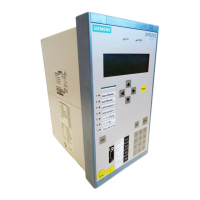
